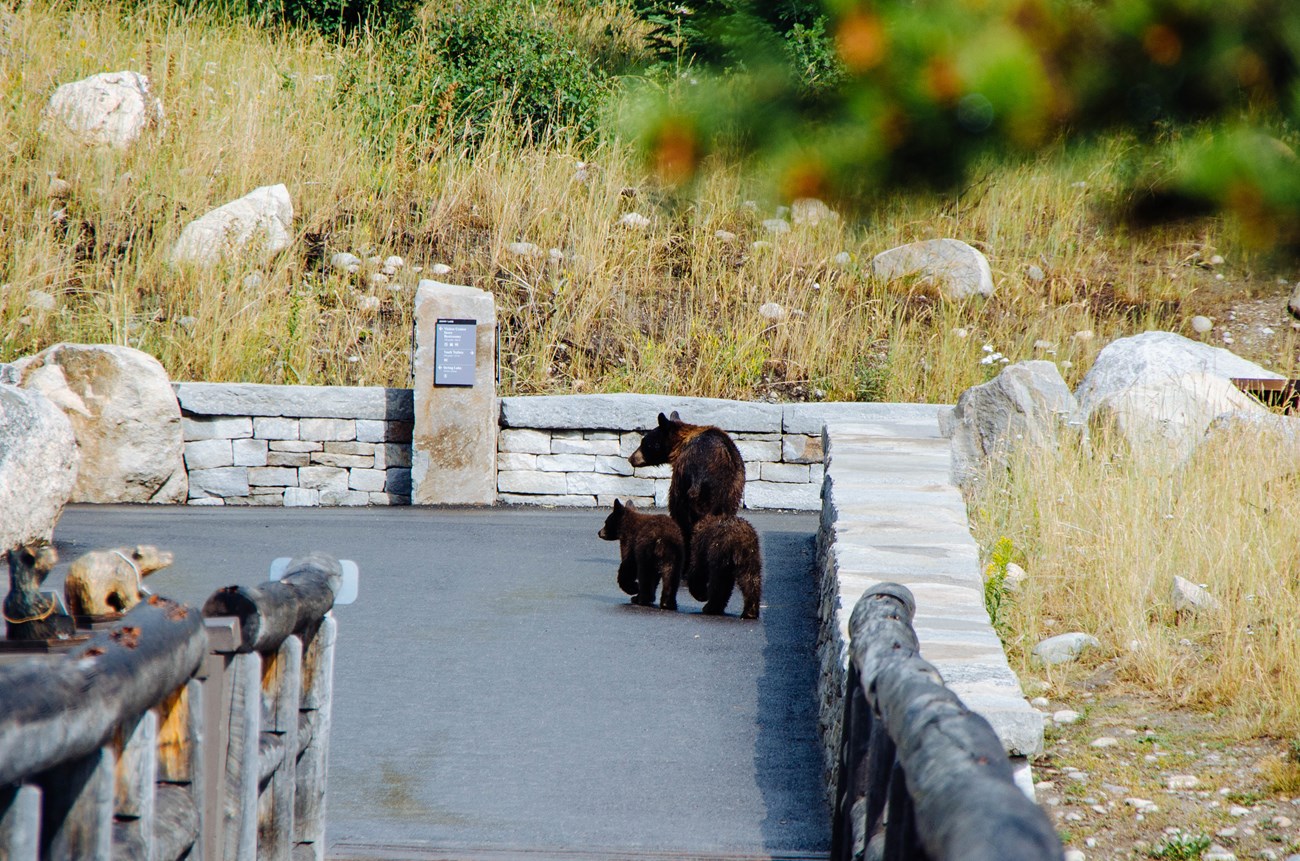
NPS Photo/J. Bonney
Bears are active throughout Grand Teton, and an encounter can happen anytime and anywhere. Use caution, stay alert, and be prepared should you encounter a bear in the park.
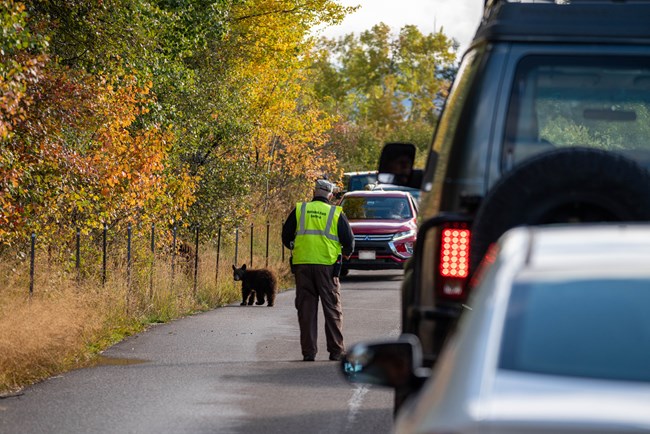
NPS Photo/C. Adams Bear EncountersBear behavior is complex. Like people, bears react differently to each situation. Bears may appear tolerant of people and then attack without warning. A bear's body language can help you determine its mood. In general, bears show agitation by swaying their heads, huffing, and clacking their teeth. Lowered head and laid-back ears also indicate aggression. If you encounter a bear:
The vast majority of bear attacks have occurred when people surprised a bear. In this situation the bear may attack as a defensive maneuver. The bear may be protecting young or defending a carcass. If a bear charges you:
In rare cases, bears have attacked at night or after stalking people. These attacks are very serious: it may mean the bear sees you as prey. If you are attacked at night or if you feel you have been stalked and attacked as prey, fight back. Use your bear spray, shout, and try to intimidate the bear with a stick or rock. In this type of situation, do whatever it takes to let the bear know you are not easy prey.
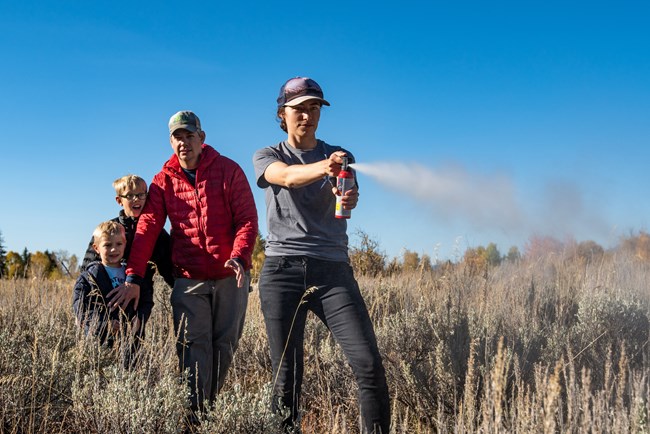
NPS Photo/C. Adams Bear Spray - Know How to Use ItBear spray has proven to be an effective, non-lethal, bear deterrent capable of stopping aggressive behavior in bears. The proper use of bear spray will reduce human injuries caused by bears as well as the number of grizzly bears killed in self defense. When carrying bear spray, it is important that you select an EPA approved product that is specifically designed to stop aggressive behavior from bears. Personal defense, jogger defense, and law enforcement or military defense spray's may not contain the correct active ingredients or have the proper delivery system to divert or stop a charging or attacking bear. Using Bear SprayBear spray should be used as a last resort when encountering an aggressive or charging bear. Carry bear spray in a place where it immediately available, not in your pack. Keep the safety in place until you are in a situation where you may need to use your bear spray.

Selecting a Bear Spray
Bear Spray Safety
Learn More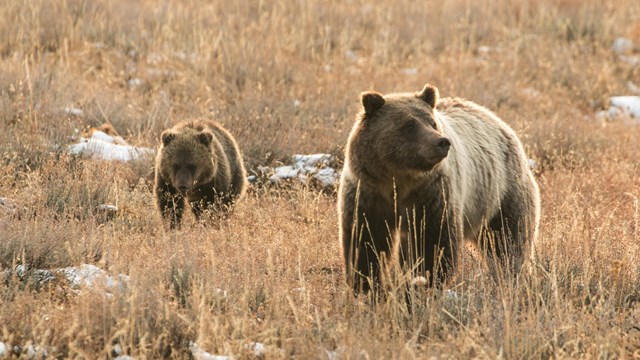
Bear and Wildlife Safety
Learn how to stay safe in bear country. 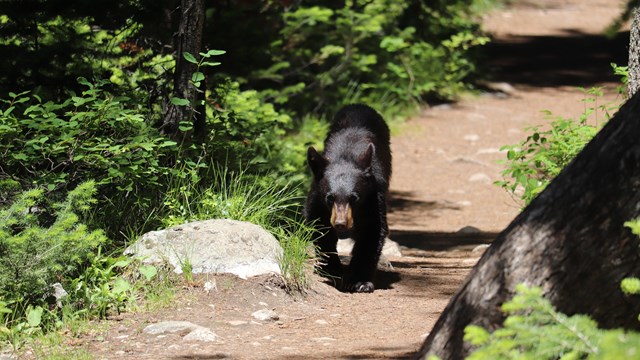
Recreating in Bear Country
Learn about hiking, camping, and backpacking in bear country. Explore Grand Teton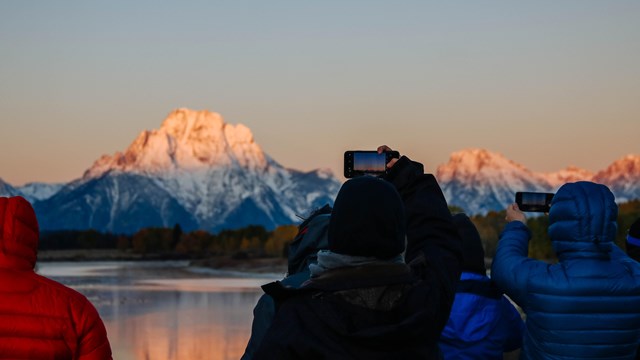
Plan Your Visit
Learn more about Grand Teton and plan your trip here. 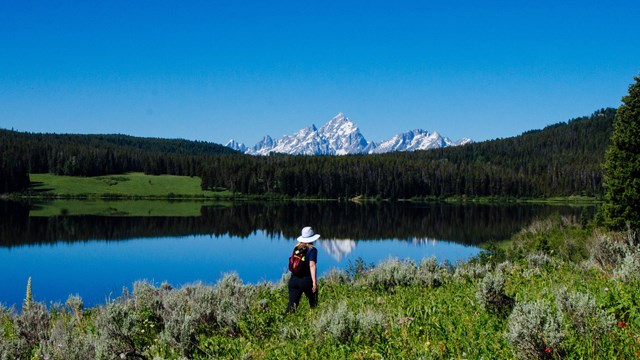
Things to Do
Find things to do while in Grand Teton. 
We have an app for that
Download the NPS App before you get here! Explore Grand Teton and discover places to visit, find a bite to eat, and a place to stay. |
Last updated: August 2, 2021
